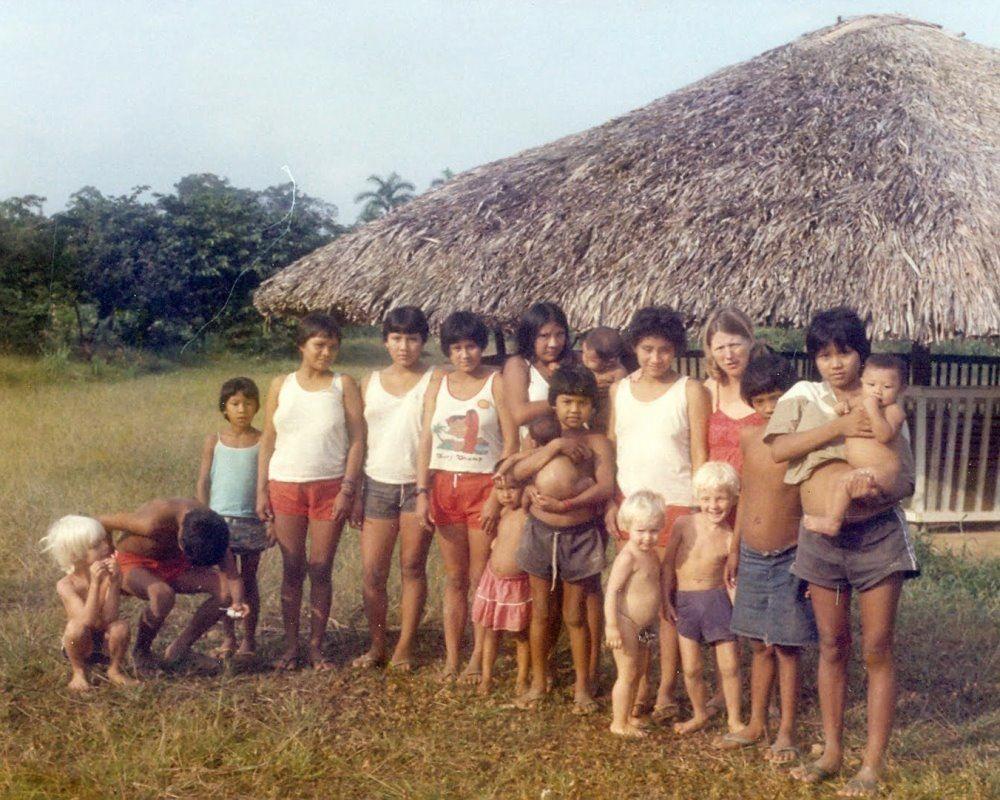
Native American Civilizations: Amazonian Tribes--The Waimiri Atroari

Figure 1.--The photo was taken in 1985 in a Waimiri-Atroari village in the state of Roraima, Brazil. The tribe was only recently pacified. We see a missionary woman and her children. The family lived in the village and the missionary children grown up as their local mates.
|
|
The Waimiri Atroari are one of tge better known Brazilian Amazonian tribes. They have a reputation as a hostile warrior people, calling themselves the Kinja. The Waimiri-Atroari live in northern Brazil. The are found in the states of Roraima and Amazonas, deep within the Amazon Basin rainforest. The first reported contact with Europeans was reported (1732). As with all of the Amazonian tribes, virtually nothing is known about them before the first reported comtact. Many historians now believes that they were more advanced, settled agrivulturaidts, friven deep in the rain forst by slave hunters. The Europeans who first noted the Waimiri-Atroariwere reportedly interested in spices, but we suspect slave hunting was also involved. They were resisted by the Waimiri-Atroari. For the next three centuries they waged war on the Brazilian Government. For years they confronted and killed any outsiders who approached them or even just entered their territory. Their isolation and remote location made their resistance posible even thojugh they lacked modern arms. As a result, when the Brazilian Government decided to build a highway through their territory, part of the Pan-American Highway, they gave the job to the Army. The army used to overcome the once isolated Waimiri-Atroari. The result was their near exteniction. And further Brazilian activity, including the Balbina hydroelectric dam flooding a large area and minining further threatened the Waimiri Atroari. Only recently did they finally surrender and accept Government efforts at pacificaion (1977). Through all of this, some survivd and as a result of more enlightened government policy, they now have secure reservation boundaries and maintain their culture. They also report a growing population.
HBC

Navigate the Historic Boys' Clothing Web Site:
[Return to the Main Amazonian tribe page]
[Return to the Main South American Amazonian Native American page]
[Return to the Main South American Native American page]
[Return to the Main Native American page]
[Return to the Main Brazilian page]
[Introduction]
[Activities]
[Biographies]
[Chronology]
[Clothing styles]
[Countries]
[Bibliographies]
[Contributions]
[Essays]
[FAQs]
[Glossaries]
[Images]
[Links]
[Registration]
[Tools]
[Boys' Clothing Home]
Created: 12:27 AM 2/13/2014
Last updated: 12:27 AM 2/13/2014



